Dwarf hairgrass (lat. Eleocharis parvula) is one of the best aquarium plants, if you need to create a ‘real lawn’ in a tank. This is a representative of coastal-aquatic vegetation, which natural habitat spreads all over the world and this fact consequently shows that the plant is easy to keep. Due to its ability to cover the substrate surface with thick green carpet, dwarf hairgrass is more often used in the foreground of a tank, which helps to imitate thick green lawns or grassplots.
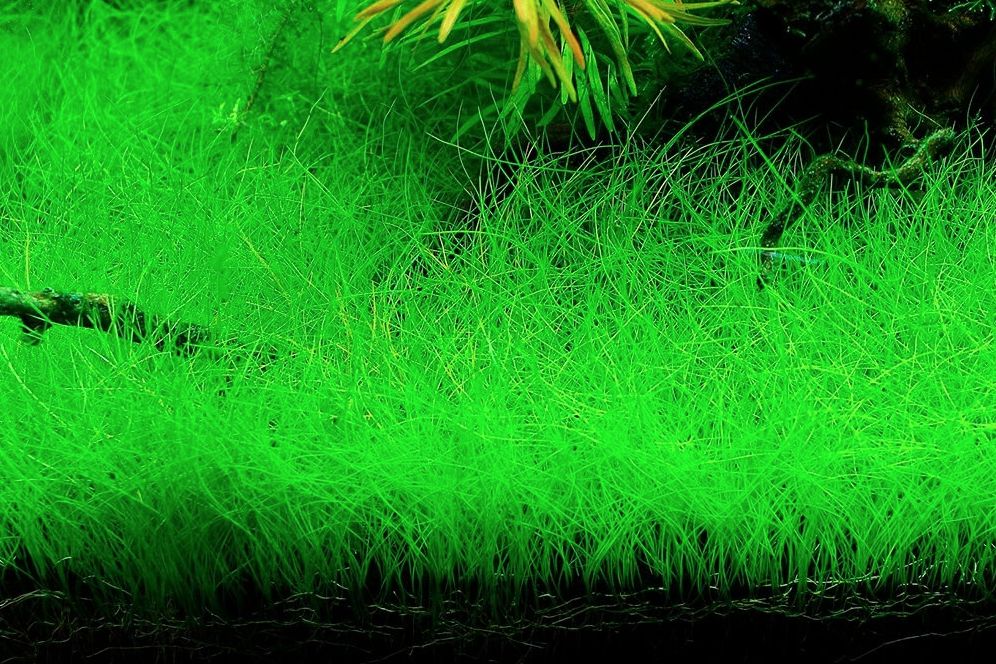
Contents
Plant Habitat in the wild
Dwarf hairgrass is a plant from circumboreal region: it is encountered in Eurasia and from North America up to Central America. Also you can find it in North Africa (Egypt) and South America (Cuba, Guatemala, Nicaragua, Venezuela). It easily and quickly adapts to new growing conditions and habitats.
This plant is typically found in shallow freshwater habitats, such as marshes, wetlands, and the edges of lakes, ponds, and slow-moving streams.
Dwarf Hairgrass often grows in areas with sandy or gravelly substrates, where it forms dense carpets or clusters. It can also thrive in areas with clay or muddy substrates, as long as sufficient light reaches the plant.
In its natural habitat, Dwarf Hairgrass is exposed to a range of water conditions. It can tolerate both soft and moderately hard water, and it is adaptable to a variety of pH levels, ranging from slightly acidic to slightly alkaline.
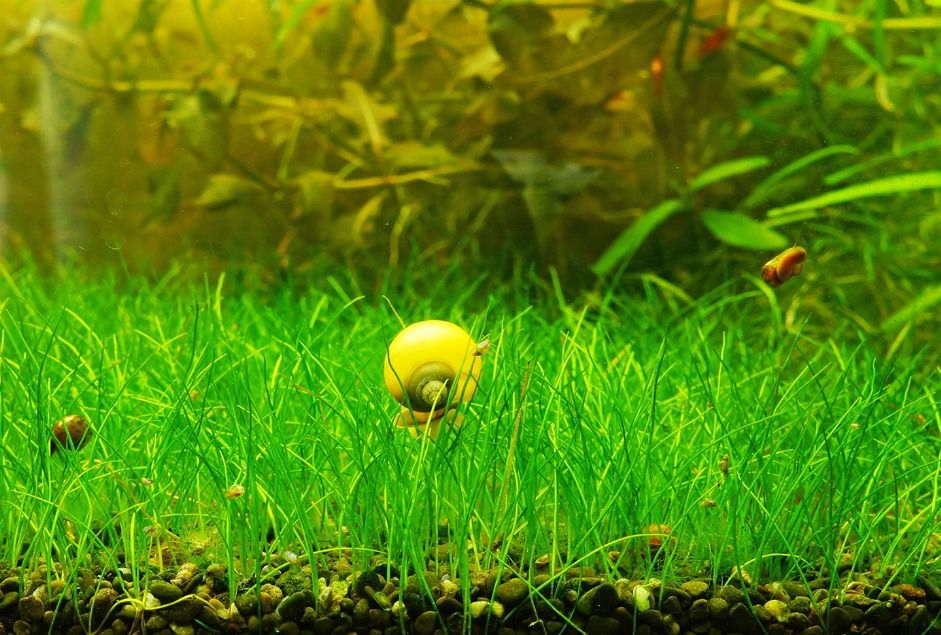
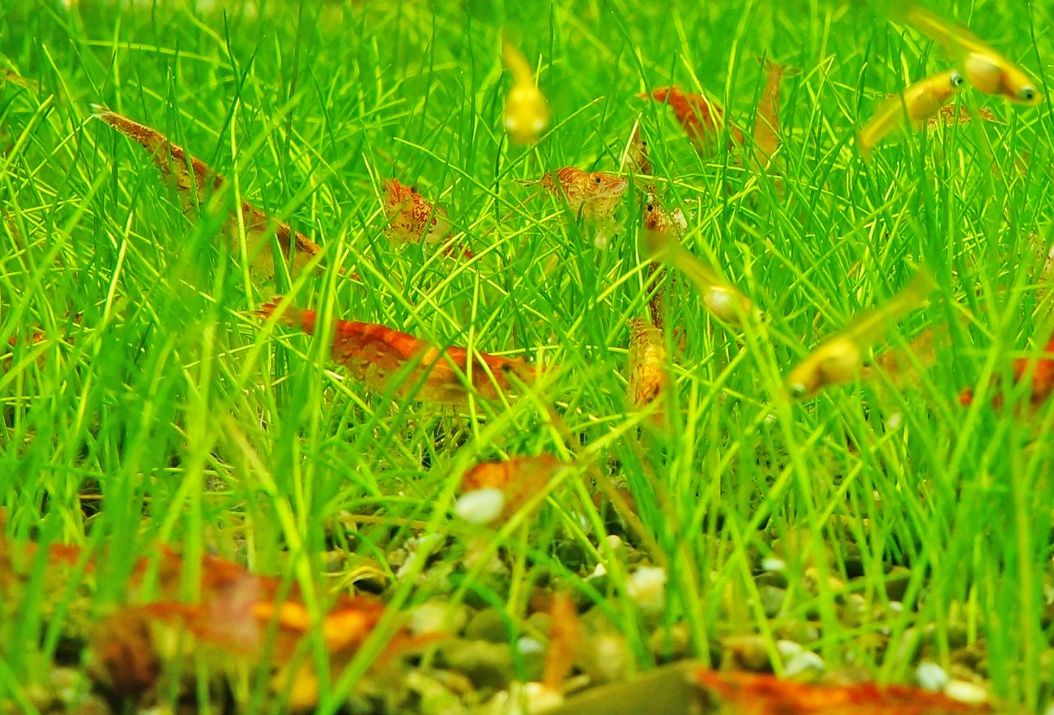
Description
Eleocharis parvula is a Latin name of the plant, but it is usually called dwarf hairgrass. Provided with optimal conditions it won’t grow taller than 5 cm (2 inches), though at low level of illumination it can grow up to 10 cm long or more. The plant leaves are thin and straight, their shape resembles needles.
The dwarf hairgrass height highly depends on the level of illumination: the more light the plant gets, the lower its bushes are. It has rather high growth rate; hairgrass propagates by means of branch-shoots and can rather quickly cover the selected area.
Eleocharis parvula is known for its relatively fast growth rate compared to many other aquarium plants. Under optimal conditions, it can spread and fill in an aquarium substrate relatively quickly, creating a dense and lush carpet effect.
| Aspect | Dwarf Hairgrass (Eleocharis parvula) |
|---|---|
| Appearance | Thin, grass-like leaves forming dense carpets |
| Growth Rate | Fast-growing, spreads quickly and fills in well |
| Height | Typically 2-4 inches (5-10 cm) in height |
| Light Requirements | Moderate to high lighting preferred |
| CO2 Requirements | Can thrive without CO2 supplementation, but benefits from it |
| Nutrient Demands | Requires nutrient-rich substrate and regular fertilization |
| Propagation | Propagates through runners, forming new plantlets |
| Water Parameters | pH: 6.0-7.5, Temperature: 68°F-82°F (20°C-28°C) |
| Tolerates Hardness | Can tolerate a wide range of water hardness levels |
| Habitat | Native to temperate and subtropical regions worldwide |
| Versatility | Suitable for foreground carpeting in various aquascapes |
| Maintenance | Regular trimming to maintain desired height and density |
| Aesthetics | Provides a natural and vibrant look to aquariums |
| Adaptability | Resilient and adaptable to different water conditions |
Dwarf hairgrass vs mini dwarf hairgrass
You should keep in mind, that dwarf hairgrass has several variations. The current article is about Eleocharis parvula. However, recently another species Eleocharis sp. mini has appeared, which is quite a seldom one for now, but it is quickly gaining popularity.
Requirements for keeping these species are identical, the difference is that Eleocharis sp. mini is smaller than Eleocharis parvula and it has twirled leaves, while Eleocharis parvula has straight leaves. Another thing is, that Eleocharis sp. mini grows very slowly.
Here’s a comparison table highlighting the key differences between Eleocharis parvula (Dwarf Hairgrass) and Eleocharis sp. mini (Mini Hairgrass):
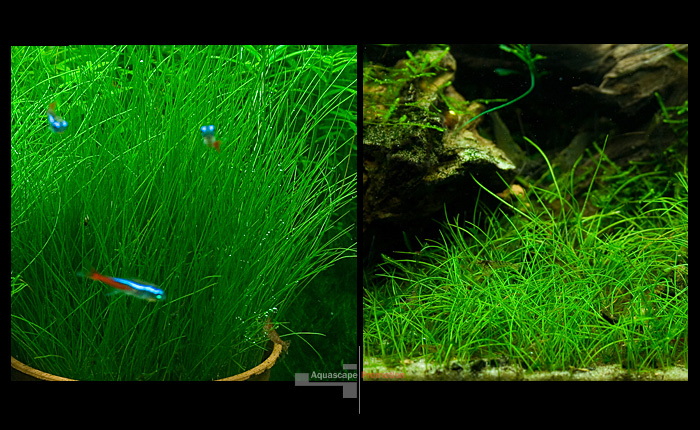
| Aspect | Eleocharis parvula (Dwarf Hairgrass) | Eleocharis sp. mini (Mini Hairgrass) |
|---|---|---|
| Appearance | Thin, grass-like straight leaves | Thin, grass-like twirled leaves |
| Growth Rate | Fast-growing, spreads quickly and fills in well | Slower growth rate compared to Dwarf Hairgrass |
| Height | Typically 2-4 inches (5-10 cm) in height | Typically 1-2 inches (2.5-5 cm) in height |
| Light Requirements | Moderate to high lighting preferred | Moderate to high lighting preferred |
| CO2 Requirements | Can thrive without CO2 supplementation, but benefits from it | Can thrive without CO2 supplementation, but benefits from it |
| Nutrient Demands | Requires nutrient-rich substrate and regular fertilization | Requires nutrient-rich substrate and regular fertilization |
| Water Parameters | pH: 6.0-7.5, Temperature: 68°F-82°F (20°C-28°C) | pH: 6.0-7.5, Temperature: 68°F-82°F (20°C-28°C) |
| Tolerates Hardness | Can tolerate a wide range of water hardness levels | Can tolerate a wide range of water hardness levels |
| Maintenance | Regular trimming to maintain desired height and density | Regular trimming to maintain desired height and density |
| Availability | Widely available in the aquarium trade | Increasing availability in the aquarium trade |
Difficulties in keeping
This plant is not for beginners, though it is not a challenging one for experienced aquarists to keep. It takes a long time for dwarf hairgrass to strike roots after it was planted. That’s why, if it is possible, you shouldn’t use this plant at the stage of setting up an aquarium.
Provided with favorable conditions dwarf hairgrass grows rather quickly and easily forms a thick green lawn, which stands trimming quite well. Trimming the plant from time to time promotes appearance of new shoots and helps making the lawn thicker.
To ensure dwarf hairgrass stable growth rate it is recommended to supply CO2 and add fertilizers into the tank. In general, this is rather undemanding and very beautiful aquarium plant in case of a settled tank.
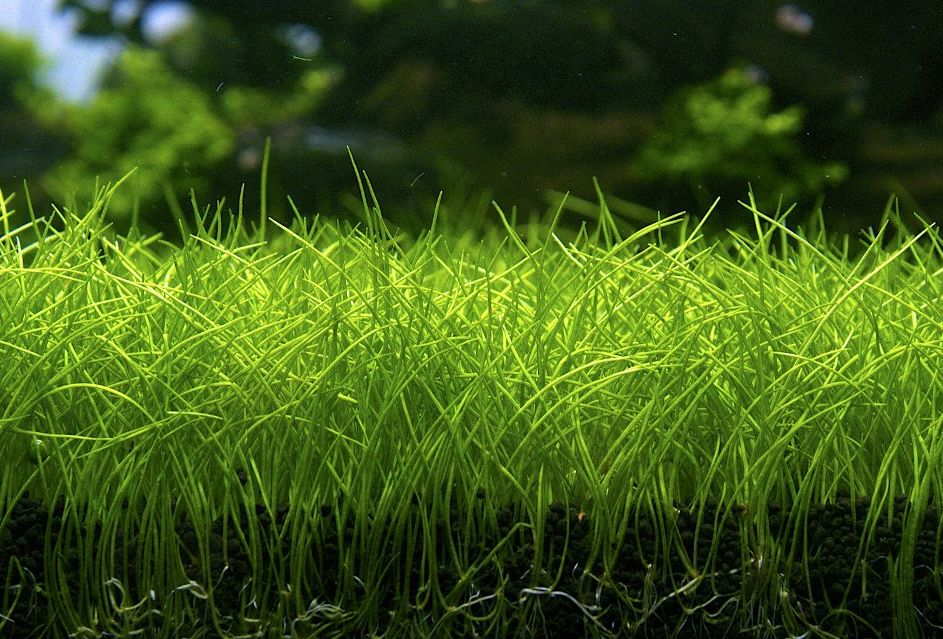
Carpet
Creating a lush and vibrant Eleocharis parvula carpet in your aquarium is an aesthetically pleasing and rewarding endeavor. To achieve this, start by preparing a fine-grained substrate with a depth of 2-3 inches (5-8 cm), ensuring it is nutrient-rich or supplemented with root fertilizers. Trim the Dwarf Hairgrass into smaller portions and plant them in the substrate, spacing them evenly to cover the desired carpet area. Regularly trim the carpet to maintain its desired height and density, and monitor and adjust CO2 and nutrient levels accordingly. With proper care and attention, your Dwarf Hairgrass carpet will flourish, creating a stunning green carpet effect in your aquarium.
Care and keeping in a tank
To grow healthily the plant requires nutritious substrate, intense lighting, CO2 supply (10-15 mg/l) and water circulation in the tank. Once these requirements are met dwarf hairgrass grows thickly over the whole surface of the tank substrate penetrating even into shadowed areas.
Shallow tanks with large bottom square are good to cultivate dwarf hairgrass, since in tall ones the plant slows down its growth rate or even stops growing at all.
At first the plant grows very slowly. For the first three weeks dwarf hairgrass gets adapted to new water medium, strikes roots and grows new shoots.
Lighting
Dwarf Hairgrass (Eleocharis parvula) generally prefers moderate to high lighting conditions for optimal growth and appearance. Provide lighting with sufficient intensity to penetrate the water and reach the lower portions of the aquarium where the Dwarf Hairgrass carpet is located. High-intensity lighting helps promote compact growth and prevents the plant from stretching.
To prevent appearance of algae fouling you have to select right lamps (with proper radiation pattern) as well as daylight duration, which shouldn’t exceed 10 hours. This mimics a natural day-night cycle and allows the plant to undergo photosynthesis and rest periods. Avoid excessive lighting duration, as it can lead to algae growth and stress the plants.
Water parameters
Dwarf Hairgrass (Eleocharis parvula) can thrive within a temperature range of approximately 68°F to 82°F (20°C to 28°C). This range covers a broad spectrum of tropical and subtropical temperatures commonly found in aquariums. However, it’s important to note that Dwarf Hairgrass can tolerate slight fluctuations within this range. To ensure successful growth of dwarf hairgrass make tank water temperature about 23 °C. The plant easily stands temperature decrease up to 20 °C.
Water pH should be within 6-7 and water hardness up to 8 KH.
Thin stems of dwarf hairgrass can’t stand algae fouling or any other biological fouling. To make sure that the plant grows successfully you should maintain the tank clean by means of using a high quality filter and regular partial water renew.
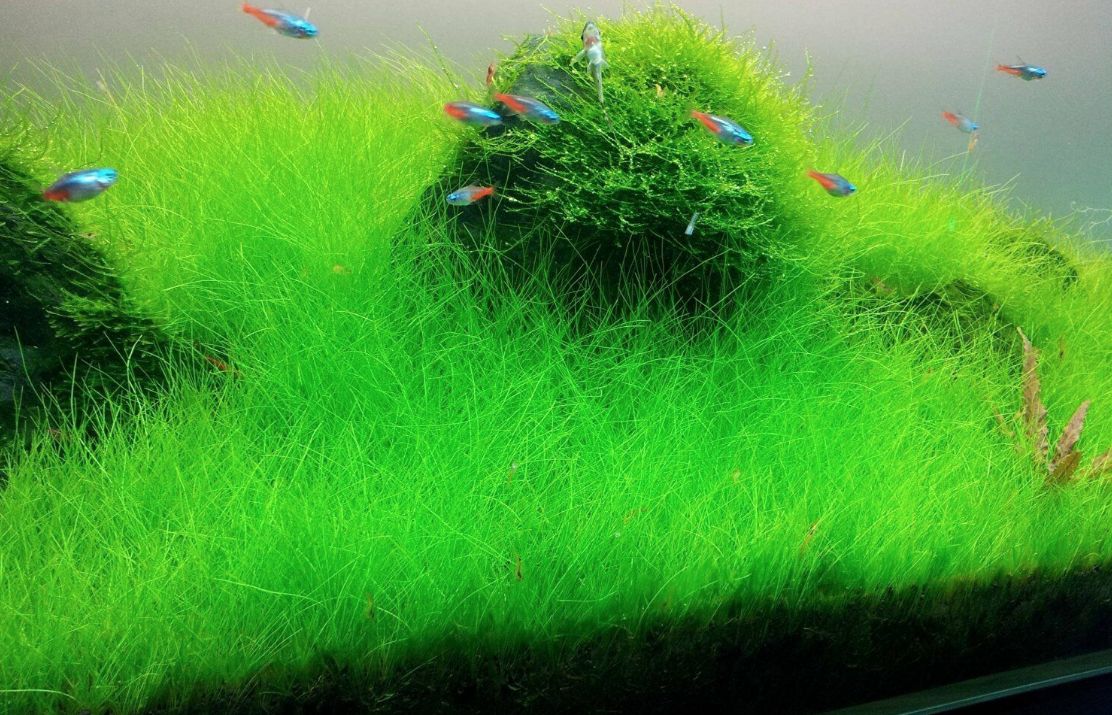
Substrate
Dwarf Hairgrass prefers a fine-grained substrate such as aquarium sand, fine gravel, or specialized planted tank substrates. The small particle size allows the plant’s roots to anchor easily and spread throughout the substrate. Consider using substrates specifically designed for planted aquariums, as they often contain nutrients like iron, potassium, and other trace elements necessary for healthy plant development.
Depth of the substrate layer should be not less than 4 cm thick with upper layer grain size not less than 3 mm, since the plant can’t stick to the substrate with larger grains and it is hard for it to strike roots into such a substrate.
From time to time you should siphonage the tank bottom surface under the plant bushes, since it becomes silty right there.
Trimming dwarf hairgrass
The old leaves of the plant gradually rot off. You should occasionally clean it from them by moving the plant a little, so that the leaves float to the water surface. This has to be done very carefully not to pull out the plant from the bottom substrate.
To maintain decorative appearance of the lawn you should trim it regularly up to 2.5 cm (1 inch) tall, such an approach promotes appearance of new shoots and makes the carpet thicker.
As for areas behind stones or in shadowed ones, to create heterogeneous natural look of the lawn you shouldn’t trim it.
CO2
Dwarf Hairgrass can grow and survive without supplemental CO2 injection in the aquarium. It is considered a relatively low-demanding plant when it comes to carbon dioxide (CO2) requirements. However, providing CO2 supplementation can benefit the growth and overall health of Dwarf Hairgrass, especially in setups with high lighting and nutrient-rich conditions.

How to plant dwarf hairgrass
Planting Dwarf Hairgrass requires some care and attention to ensure successful establishment and growth. Here’s a step-by-step guide on how to plant Dwarf Hairgrass in your aquarium:
- Prepare the Substrate: Choose a fine-grained substrate like aquarium sand or specialized planted tank substrate. Ensure a depth of at least 2-3 inches (5-8 cm) to provide sufficient space for the roots to anchor and spread.
- Trim the Plants: Before planting, trim the Dwarf Hairgrass into smaller portions or individual clumps. This will facilitate easier planting and allow for more even coverage of the desired carpet area.
- Create Planting Holes: Use your fingers, tweezers, or a planting tool to create small holes in the substrate where you want to place the Dwarf Hairgrass. Space the holes evenly, ensuring enough room for the plants to spread and grow.
- Planting Technique: Take a small portion of the trimmed Dwarf Hairgrass and gently insert it into the planting hole. Make sure to plant it deep enough so that the blades are just above the substrate surface. Press the substrate around the base of the plant to secure it in place.
- Repeat and Cover: Repeat the planting process, filling the desired carpet area with the Dwarf Hairgrass plants. Aim for even spacing between the plants to achieve a uniform and dense carpet effect. Cover the entire area, ensuring there are no bare spots.
- Initial Care: After planting, carefully fill the aquarium with water, using a gentle flow to avoid disturbing the substrate. It’s recommended to fill the tank slowly to prevent displacing the newly planted Dwarf Hairgrass. Ensure that the plants are properly submerged.
Sources:
- https://aquascape-promotion.com/eleoharis-mini
- https://tropica.com/en/plants/plantdetails/Eleocharisparvula(132C)/4572
- https://www.researchgate.net/publication/281287978_A_new_record_of_Eleocharis_parvula_Roem_Schult_Bluff_Nees_Schauer_Cyperaceae_in_Korea
- http://plantnetwork.org/wordpress/wp-content/uploads/4714/eleoparv.pdf